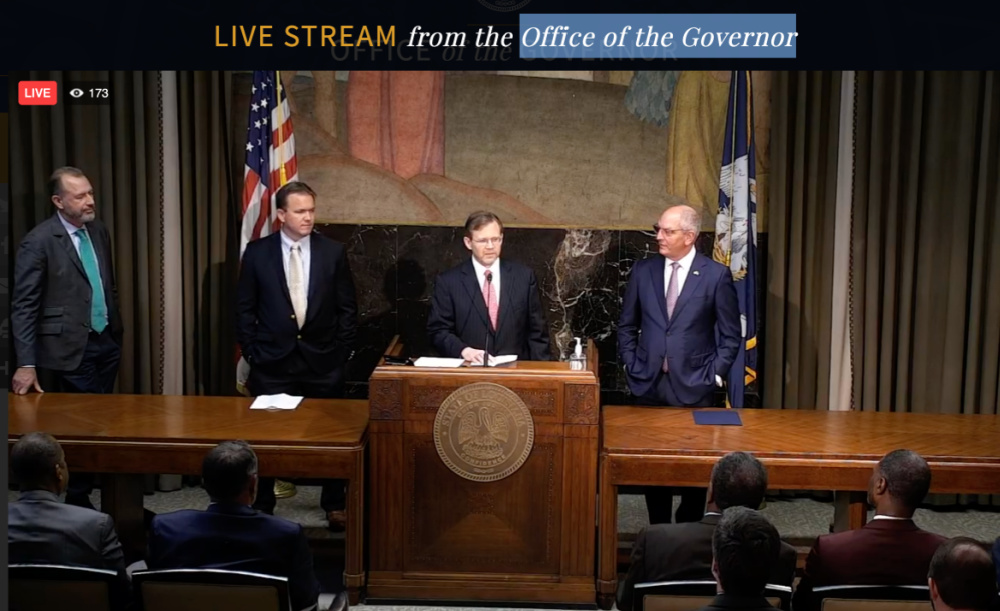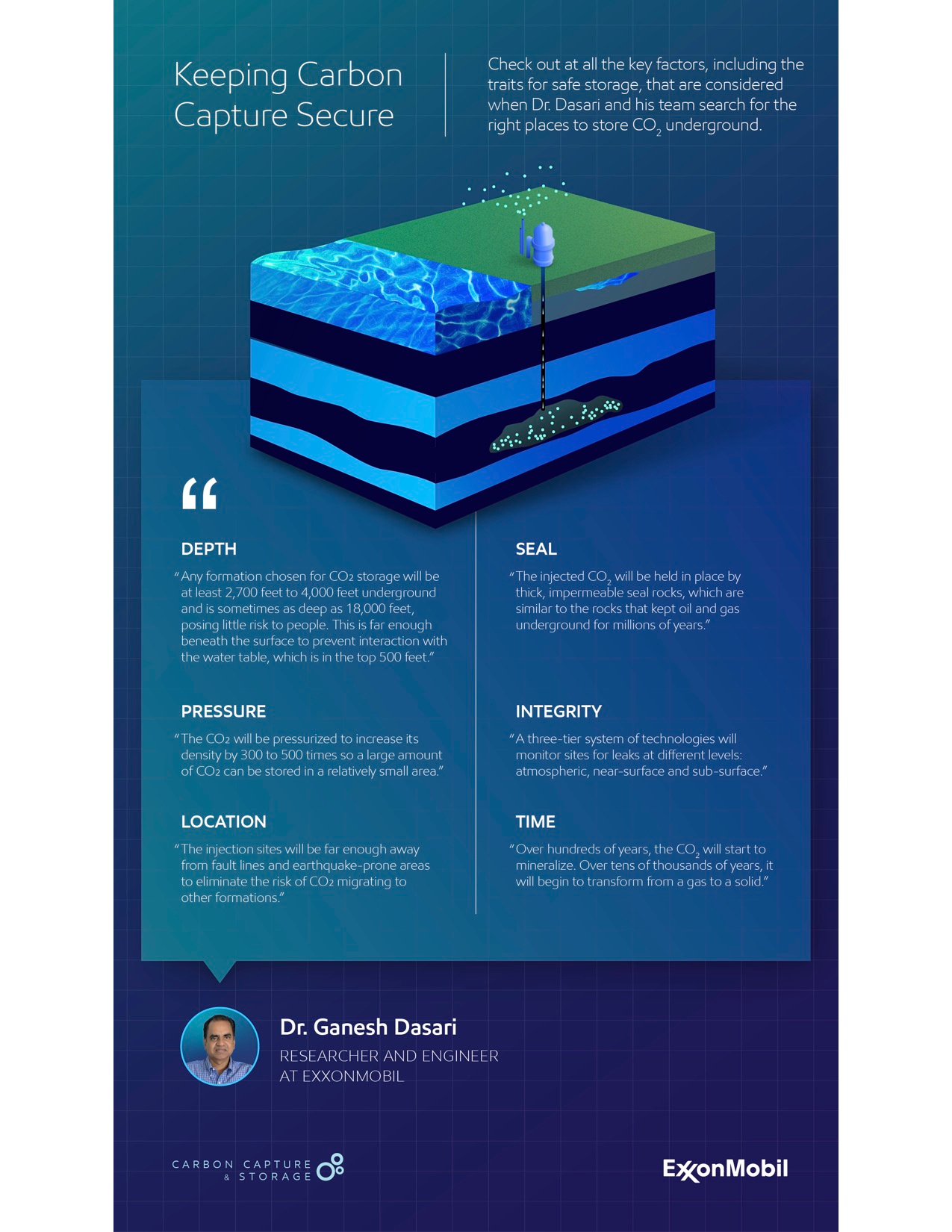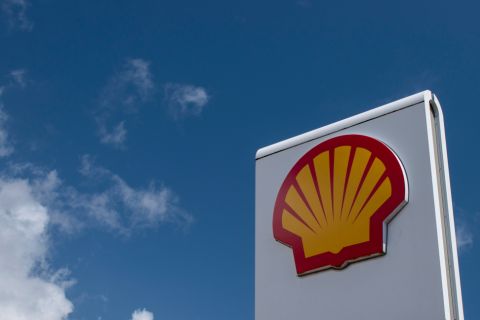
As part of its agreement with EnLink Midstream, Exxon Mobil will use EnLink’s transportation network to deliver CO₂ to the permanent geologic storage site in Louisiana. (Source: Shutterstock.com)
Exxon Mobil Corp. plans to develop a 125,000-acre CO₂ storage location in Vermilion Parish, Louisiana, where CF Industries will store CO₂ captured from its operations.
Dan Ammann, president of ExxonMobil Low Carbon Solutions, said during a livestream event announcing the project on Oct. 12 that it is accelerating the path to net-zero emissions for Louisiana, the U.S. and the world.
“We’re making something really significant happen here,” Ammann said.
CF Industries, which manufactures hydrogen and nitrogen products, aims to capture and store up to 2 million metric tons of CO₂ emissions annually from its manufacturing complex in Louisiana when the project starts up in early 2025.
During the livestream event, Louisiana Gov. John Bel Edwards added that the state had the moral obligation to pursue scientifically sound and safe methods of reducing emissions.
“Science supports it, it is safe,” Edwards said. “We’re obligated to do this.”
CF had already announced a $200 million investment in building a CO₂ dehydration and compression unit at its Donaldsonville, Louisiana, facility to enable transport and storage of captured CO₂. Under the commercial agreement, Exxon Mobil will transport and permanently store the captured CO₂ in secure geologic storage it owns in Vermilion Parish.

The project “firmly puts us on the path to do something about our emissions,” Erik Mayer, vice president of clean energy solutions for CF, said during the livestream event.
Also, as part of the project, Exxon Mobil has signed an agreement with EnLink Midstream to use EnLink’s transportation network to deliver CO₂ to the permanent geologic storage site. EnLink’s more than 4,000 miles of in-ground pipeline lower the impact of the project because new pipeline is not needed, according to Benjamin D. Lamb, the company’s executive vice president and COO.
“This is not new technology. The industry has been transporting CO₂ for decades and doing that safely,” Lamb said during the event.

According to CF Industries Holdings President and CEO Tony Will, the CO₂ offtake agreement with Exxon Mobil accelerates CF’s decarbonization journey and supports the state’s and nation’s climate goals.
“This agreement also ensures that we remain at the forefront of the developing clean energy economy. As we leverage proven carbon capture and sequestration technology, CF Industries will be first-to-market with a significant volume of blue ammonia,” Will said in a news release.
CF Industries expects to market up to 1.7 million metric tons of blue ammonia annually. A chemical process is considered blue when CO₂ emissions are captured before they are released into the air, making the process more carbon-neutral. Demand for blue ammonia is expected to grow because ammonia’s components—nitrogen and hydrogen—do not emit carbon when combusted, CF said.
Ammann said in a press release that the project represents “large-scale, real-world progress on the journey to decarbonize the global economy.”
Exxon Mobil has increasingly focused on carbon capture and storage (CCS) technologies, solutions and projects.
That focus has largely been around CCS efforts on point-source emissions, or the process of capturing CO₂ from industrial activity that would otherwise be released into the atmosphere. Once captured, the CO₂ is injected into deep, underground geologic formations for safe, secure and permanent storage.
About a year ago, 11 companies, including Exxon Mobil, announced they support large-scale deployment of CCS in the Houston area. And in November, ExxonMobil and Malaysia’s PETRONAS signed a Memorandum of Understanding (MOU) to collaborate and jointly explore potential carbon capture and storage projects in Malaysia.
In April of this year, Exxon Mobil said it was taking on pre-front-end engineering design (pre-FEED) studies around the potential for CCS to reduce greenhouse-gas (GHG) emissions from multiple industries in the Gippsland Basin in Southeast Australia. The project, Exxon Mobil said, could capture up to 2 million metric tons of CO₂ per year and could be online as early as 2025.
In June, Exxon Mobil, Shell, CNOOC and Guangdong Provincial Development & Reform Commission signed an MoU to evaluate the potential for a world-scale CCS project to reduce GHG emissions at the Dayawan Petrochemical Industrial Park in Huizhou, Guangdong Province, China. That project could capture up to 10 million metric tons of CO₂ per year, according to Exxon Mobil.
Recommended Reading
BP Pursues ‘25-by-‘25’ Target to Amp Up LNG Production
2024-02-15 - BP wants to boost its LNG portfolio to 25 mtpa by 2025 under a plan dubbed “25-by-25,” upping its portfolio by 9% compared to 2023, CEO Murray Auchincloss said during the company’s webcast with analysts.
Kissler: OPEC+ Likely to Buoy Crude Prices—At Least Somewhat
2024-03-18 - By keeping its voluntary production cuts, OPEC+ is sending a clear signal that oil prices need to be sustainable for both producers and consumers.
NGL Growth Leads Enterprise Product Partners to Strong Fourth Quarter
2024-02-02 - Enterprise Product Partners executives are still waiting to receive final federal approval to go ahead with the company’s Sea Port Terminal Project.
Canadian Natural Resources Boosting Production in Oil Sands
2024-03-04 - Canadian Natural Resources will increase its quarterly dividend following record production volumes in the quarter.
Shell’s CEO Sawan Says Confidence in US LNG is Slipping
2024-02-05 - Issues related to Venture Global LNG’s contract commitments and U.S. President Joe Biden’s recent decision to pause approvals of new U.S. liquefaction plants have raised questions about the reliability of the American LNG sector, according to Shell CEO Wael Sawan.






